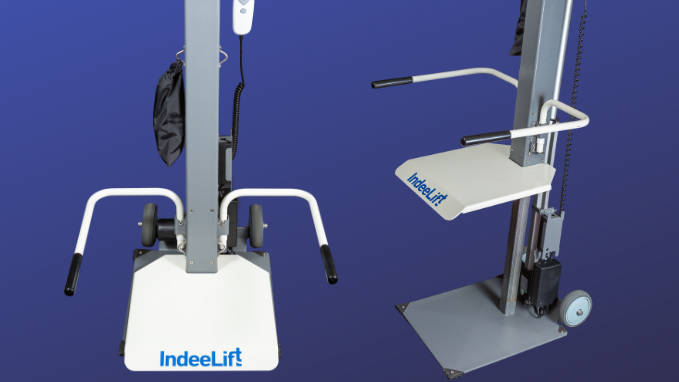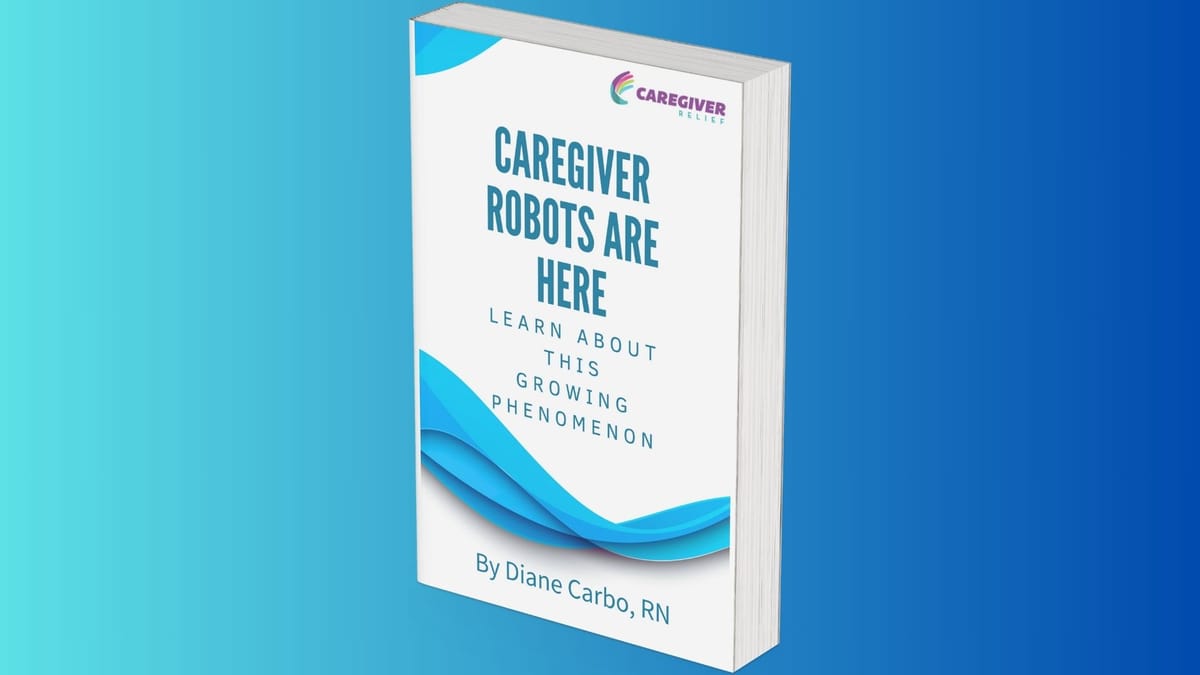Navigating Long Distance Caregiving- Tips for Providing Support
Providing care for aging parents from a distance can be challenging. Discover how to make your visits count and how to explore financial and insurance options for your parents' future care needs.

Long distance caregiving tips...
Carol is a long-distance caregiver. She writes,
I live across the country at the present time, and I speak to my parents once or twice a week.
How do I know if they need help? Do many others try to do long-distance caregiving?
Thank you for your continued support. I am grateful for your site.
Carol

Carol,
Thank you for this great question. I have many caregivers who live an hour or more away from their family members, and there are solutions to this issue that I will share at length.
I encourage every caregiver to create a Care Team Partner (CTP) support group.
We are facing a public health crisis in this country. There are now more seniors than youth, and this is a serious situation that will only worsen over time as we experience a silver tsunami.
Please take the time to learn about building this CTP support group. Feel free to reach out to me with any questions.
Thank you for reaching out.
Warm Regards,
Diane Carbo RN
Long distance caregiving is challenging
Long-distance caregiving is a challenging but essential role for many who find themselves caring for aging or ill family members who live far away. As a long-distance caregiver, you play a vital role in ensuring your loved one's well-being and comfort, even when you can't be physically present. In this comprehensive guide, we'll explore what it means to be a long-distance caregiver, what you can do to provide effective support, and how to make this caregiving journey more manageable. We'll delve into financial caregiving, getting organized, maintaining good communication, bu ding a care team, and the benefits of caregiving coaching or a care manager. Let's get started!
What is a Long-Distance Caregiver ?
A long-distance caregiver is someone who provides care and support for a family member or loved one who lives far away, typically in another city, state, or even country. While you may not be physically present, your role is no less significant. Long-distance caregivers often face unique challenges, such as coordinating care from afar and dealing with feelings of guilt and helplessness. However, with the right strategies and support, you can provide effective care even from a distance.
Supporting Family Members from Afar
As a long-distance caregiver, there are several key ways you can support your family members and ensure their well-being:
Financial Caregiving: Understand your loved one's financial situation, help them manage their finances, and ensure they have access to the necessary resources to cover their care expenses.
Getting Organized: Stay on top of medical records, legal documents, and care plans. Having all essential information well-organized is critical for effective caregiving.
Maintaining Good Communication: Keep open and regular communication with your loved one, their primary caregiver, and healthcare providers. Technology makes it easier than ever to stay connected.
Building a Care Team Partner Support Group: Create a support network of friends, family, neighbors, and professional caregivers who can be your eyes and ears on the ground.
Caregiving Coaching or Care Manager: Consider seeking the guidance of a professional caregiver coach or a care manager to navigate the caregiving journey more effectively.
Now, let's explore these aspects in greater detail.

The Role of a Financial Caregiver
Being a financial caregiver involves managing the monetary aspects of your loved one's care. Here are some essential tips for handling this crucial role:
Assess the Financial Situation: Understand your loved one's income, savings, investments, and expenses. Create a budget to ensure their financial resources are adequate for their care needs.
Power of Attorney: Consider obtaining legal authority through a durable power of attorney, allowing you to manage your loved one's finances when they can no longer do so themselves.
Monitor Expenses: Keep a close eye on your loved one's expenses related to their care, ensuring that the funds are being used wisely and efficiently.
Plan for the Future: Be prepared for the long-term financial implications of caregiving, such as arranging for Medicaid or long-term care insurance if necessary.
Getting Organized for Long-Distance Caregiving
Effective organization is the cornerstone of successful long-distance caregiving:
Create a Health Care Notebook: Compile all essential documents, including medical records, insurance policies, legal documents, and contact information for healthcare providers.
Develop a Care Plan: Work with your loved one's primary caregiver to create a comprehensive care plan that outlines their medical needs, daily routines, and preferences.
Utilize Technology: Embrace digital tools and apps to track appointments, medications, and to-do lists. This ensures that you're always up to date.
Stay Informed: Regularly check in with the primary caregiver, and attend medical appointments or meetings remotely whenever possible.

Maintaining Good Communication
Effective communication is vital in long-distance caregiving:
Scheduled Check-Ins: Establish a routine for regular check-in calls or video chats with your loved one. It helps you stay connected and monitor their well-being.
Open Dialogue: Encourage your loved one to share their concerns, fears, and preferences with you. Being a compassionate listener is key.
Coordinate with the Primary Caregiver: Maintain a strong line of communication with the primary caregiver, whether it's a family member, friend, or professional caregiver.
Share Information: Use secure methods to share important documents, notes, and updates with the care team to ensure everyone is on the same page.
Building a Care Team Partner Support Group
Creating a care team involves enlisting the help of people who can provide on-the-ground support:
Friends and Family: Reach out to family members, friends, and neighbors who live closer to your loved one. They can assist with daily tasks, offer companionship, and provide updates.
Professional Caregivers: Consider hiring in-home caregivers or using home health services, especially if your loved one's needs are significant.
Community Resources: Explore local resources, such as senior centers, meal delivery programs, and transportation services, to help meet your loved one's needs.
Support Groups: Join caregiver support groups, either in person or online, to connect with others facing similar challenges and share advice and experiences.

Caregiving Coaching or a Care Manager
Engaging the services of a caregiving coach or a care manager can provide invaluable support:
Caregiving Coaching: A caregiving coach can offer guidance, emotional support, and practical advice on managing the challenges of caregiving. They can help you develop coping strategies and find balance in your caregiving role.
Care Manager: A professional care manager is skilled in coordinating care plans, navigating the healthcare system, and ensuring your loved one receives the appropriate services and support. They can serve as your advocate on the ground.
Embrace the use of technology
Certainly, technology can be a valuable tool for long-distance caregivers to stay connected and provide effective support. Here are some suggestions on how technology can be utilized:
Video Calls and Conferencing: Platforms like Zoom, Skype, FaceTime, and Google Meet allow you to have face-to-face interactions with your loved one, offering a sense of closeness and enabling you to visually assess their well-being. You can also participate in virtual doctor's appointments and care meetings.
Messaging Apps: Use messaging apps like WhatsApp, Telegram, or Facebook Messenger to stay in touch throughout the day. Share updates, photos, and messages with your loved one and the care team. These apps also support group chats for efficient communication.
Telehealth Services: Many healthcare providers offer telehealth services, allowing your loved one to consult with medical professionals remotely. You can help facilitate these appointments and participate in them from a distance.

Smart Home Devices: Consider installing smart home devices like cameras, motion sensors, and remote door locks. These technologies enable you to monitor your loved one's safety and well-being from a distance and receive alerts if anything unusual occurs.
Medication Management Apps: Apps like Medisafe and PillPack help you ensure your loved one takes their medications on time. They provide reminders, track dosages, and can even deliver medications directly to your loved one's door.
Personal Emergency Response Systems (PERS): PERS devices are wearable or in-home systems that allow your loved one to call for help in emergencies. They often come with fall detection and GPS tracking, offering peace of mind for both the caregiver and the care recipient.
Virtual Support Groups: Online support groups, forums, and social media communities dedicated to caregiving can be a source of emotional support, information, and advice. They allow you to connect with others who are going through similar experiences.
Health Tracking Apps and Devices: Use health and fitness tracking apps and devices to monitor your loved one's vital signs, activity, and sleep patterns. This information can help you and healthcare professionals assess their well-being.
Elderly-Friendly Tablets and Devices: Consider providing your loved one with a user-friendly tablet or smartphone designed for seniors. These devices often have simplified interfaces, larger text, and built-in features like video calling.
Digital Therapeutics: Explore apps and programs designed to support mental health and cognitive function in seniors. These can help alleviate depression, anxiety, and loneliness.
Automatic Bill Payment and Financial Management Apps: Help your loved one set up automatic bill payments through online banking platforms. Use financial management apps to track expenses and ensure their financial well-being.
E-prescription Services: Use e-prescription services to have prescriptions sent directly to your loved one's preferred pharmacy for pickup or delivery.
Robotic Assistance: Consider robotic devices that can provide companionship, medication reminders, and even engage in video calls. Some robots are designed specifically for seniors and can be controlled remotely.
By integrating these technological solutions, long-distance caregivers can provide better care, maintain close connections with their loved ones, and ensure their overall well-being from afar.
In Conclusion
Long-distance caregiving is a complex and emotionally challenging role, but with the right strategies and support, you can make a significant difference in your loved one's life. From financial caregiving to staying organized, maintaining open communication, building a care team, and considering professional guidance, the journey of caregiving can be made more manageable and effective. Remember that you are not alone in this journey, and seeking support and assistance is a sign of strength. Your commitment to providing care and support from afar is a testament to your love and dedication to your family member, making a profound impact on their quality of life.
You might also like this article:















